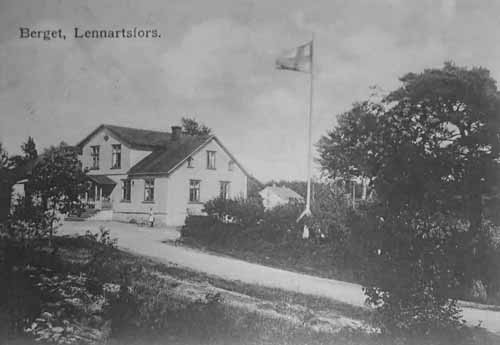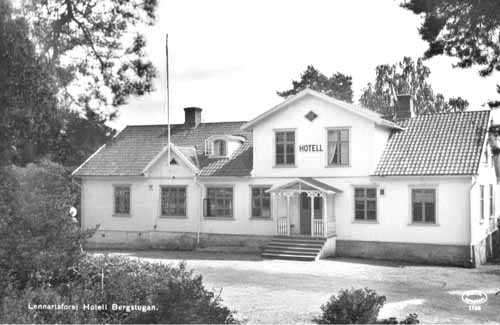Bergstugan and Brukshandeln
erected 1846/1892
The mill's shop
open 1861 in the current Bergstugan café while the old shop (Brukshandeln
a cross the street) was used as a warehouse building.

The building has
been used as shop, warehouse, and offices and even for a short period
of time as the home for some of the mill's mangers.
The shop moved from
Bergstugan across the street in 1920s to Brukshandeln. Where the grocery
was sold without interruption until 2013. In 2021 do we again open up
a small shop in Bergstugan.
Bergstugan was transformed
into a hotel/guest house in 1920s at the same time as the shop moved
across the street. The building had at that time a hall, 6 rooms, serving
area and a kitchen. In the 1920s did the second floor divided into 5
rooms, bathroom and a WC.

Today do Bergstugan
have an apartment for rent on the second floor, with three bedrooms,
kitchen, family room and a bathroom. The first floor has a café
and a small shop.
Lennartsfors
In Wikipedia you can read that like Charlottenberg and Töcksfors,
Lennartsfors is an old mill town that now lives in smaller industries,
including Lennartsfors AB, which manufactures JärnHästen,
Hjulhästen and flakmopeder (under the norsjö moped brand).
A water mill was built in Lennartsfors back in the 16th century and
from the 17th century there was a water-powered sawmill. Lennart Uggla
and Gustaf Ekman built an ironworks at Ränkeforsen around 1840,
which was closed down in 1877. In the 1880s, a wooden mass factory was
built on the site, which was in operation until 1940.
Since then, some mechanical industry related to the Facit Group has
been located on the ground. Most buildings remain standing but are out
of use. The locks in Lennartsfors form part of the Dalsland Canal and
were built in 1865. With these locks, Lennartsfors is an important hub
between several different waterways.
The name Lennartsfors comes after Lennart Uggla and has been the name
of the town since 1839. Previously, the town was called Ränkefors
after Ränkeforsen.

